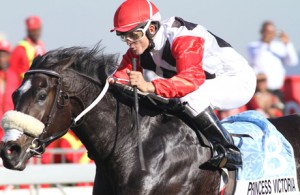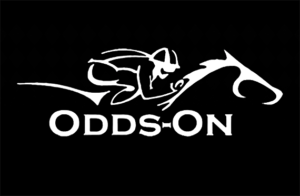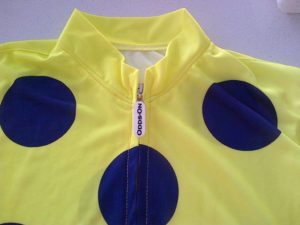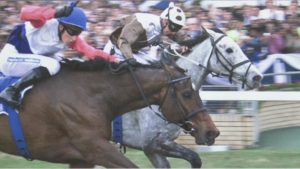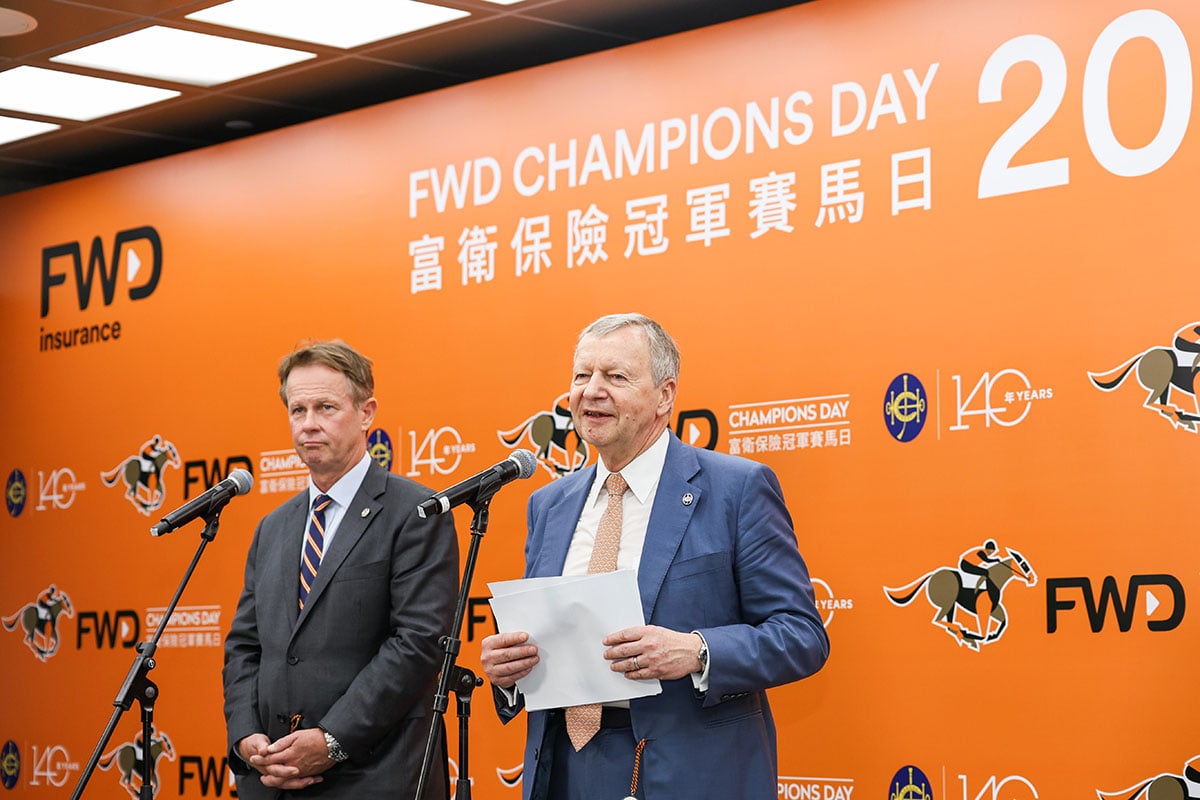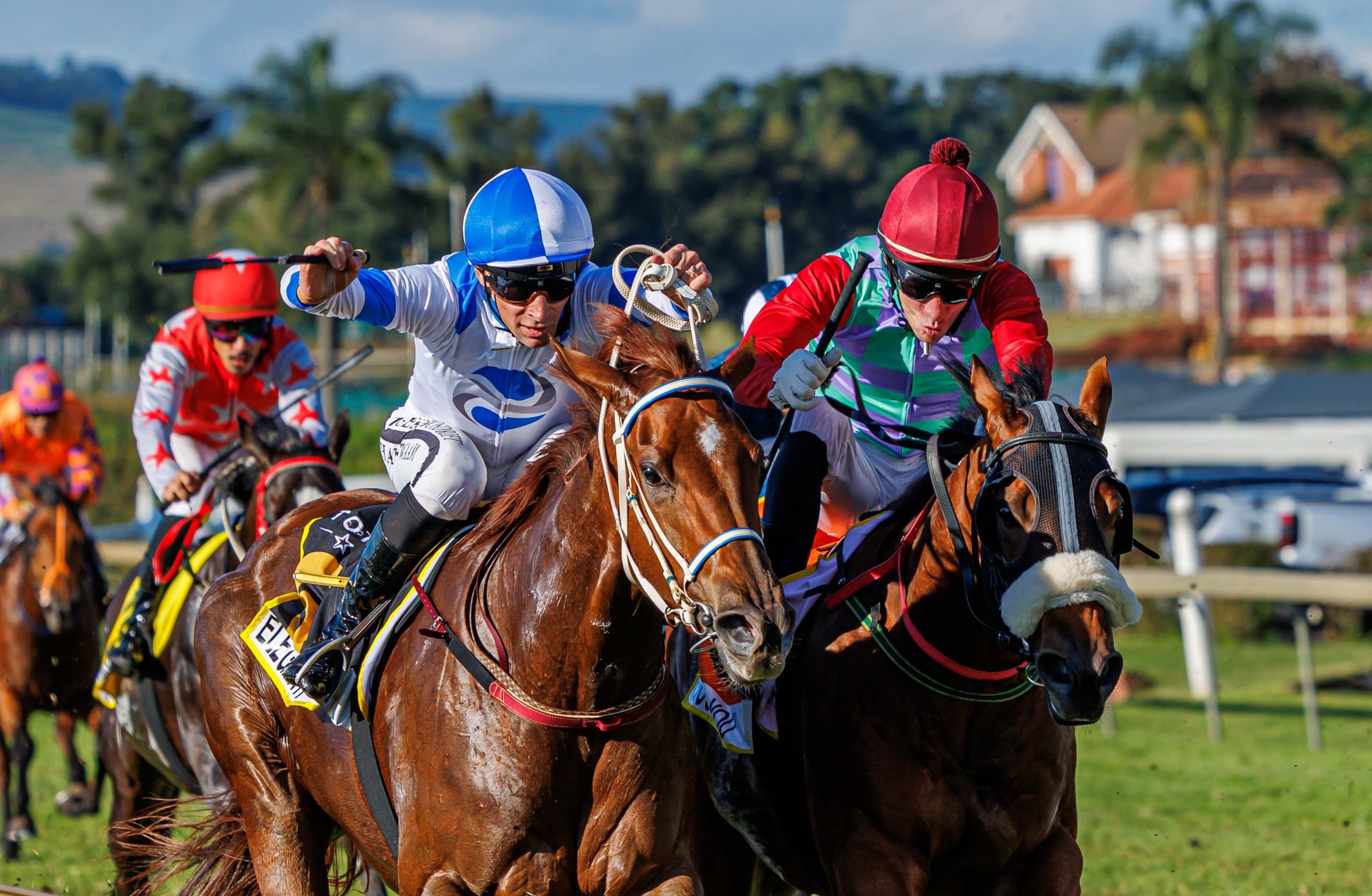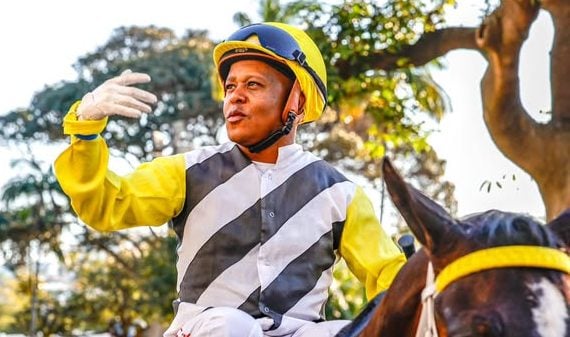Big (or even small) race days conjure up mental pictures of warm, sunny afternoons with a kaleidoscope of horses and their colourfully clad jockeys jogging around the parade ring and down the chute like coiled springs, poised to fire. But have you ever stopped to wonder where those lovely silks come from? Like so many things in racing, there are stories behind those too. I chatted to Fiona McLeod from Odds On Colours – the largest supplier of printed racing colours in South Africa – to find out more.
About Fiona
Fiona went to school with Sue Snaith and relates that the two of them took riding lessons together and have been firm friends since they were 10 years old. “We’ve known each other forever,” explains Fiona. “We rode together at shows and eventually Sue went off to do nursing and I went to Varsity. Sue carried on riding, but I stopped as there just wasn’t the time and eventually I lost interest in that kind of riding. Then I went overseas for a long time and didn’t ride at all but when I got back, I think it was the first season the Snaiths brought horses to Durban, Sue rang up and asked ‘when was the last time you sat on a horse?’ I went down to Isipingo beach – it was the days that you could still ride there – and they put me on a nice quiet horse. It was the first time I’d ridden for many years and I fell in love with it again. Then Sue said ‘why don’t you come and ride work in the morning?’ I said don’t be ridiculous, I wouldn’t know how, but the next day I arrived, in borrowed boots and a hat. Vince Curtis was one of the Academy Riding masters and demanded to know who I was and what I was doing!” she laughs. “Anyway, to cut a long story short, I started off just trotting horses in the ring and then one or two of the braver trainers, such as old man Passmore, put me on something bombproof and it started like that. Someone who was really helpful was Ralph Rixon,” she remembers. “By then I was addicted and I’d go down every single morning before work and ride work and I rode in quite a number of the ladies races.”
After Fiona had her daughter in 1991, she decided not to go back to work, but soon realised she was bored sitting at home. “I’d gone back to riding work for Vaughan Marshall and one day I asked “Who makes all the colours? I quite like sewing and if you can give me some work, it would be something for me to do.” She then laughs explaining that her first order took two weeks and nearly broke her neck and back trying to figure it out. “I made colours the traditional way for the first few months.” The ‘traditional way’ entailed sourcing material of the requisite colours, and then cutting and sewing the pieces together to make up the silks. For example the Jaffee colours would require white for the body, black for the diamonds and red for the sleeves and cap. It was time consuming and labour intensive, with the added disadvantage that silks did not always come out exactly the same as you are limited to what is available in the shops.”
“At the time I remember saying to Val Rixon there must be a different way of doing colours and I experimented with screen printing, but the ink all cracked and that didn’t work. Val told me about a place in Perth with a shop on the racecourse that did printed colours, so I contacted them and tried to negotiate a franchise of sorts, but it was outrageously expensive and there weren’t enough owners in this country to warrant spending that kind of money. In the meantime, they’d sent me a couple of samples and I took it to someone who explained that it had been done by sublimation printing.”
“I decided I wanted to print silks and did quite a bit of research and bothered a lot of people in the printing industry who all said I was wasting my time and that it was not possible. Eventually I found a guy who said he thought he could help. Now we’re talking the early 90’s which was long before the days of digital anything, but with a lot of trial and error and a lot of mistakes, we found a way, so we sort of pioneered it in South Africa. And that’s how I did it until digital print became available in the early 2000’s. So things have progressed, but my colours are still printed, it’s just more accurate now.” Fiona now makes racing silks and associated racing kit on a full-time basis.
Design
For traditional fit silks, Fiona uses a lightweight satin that has a fantastic shine, is machine washable and colourfast. She uses white and then transfers the ink onto the fabric in the required pattern.
“Sometimes owners will call me direct, but most of my orders come through word of mouth, or if someone has picked up a pamphlet at the NHA in Johannesburg or their local centre, but 90% of my orders come via trainers. They’ll ring up and ask for a set of colours for so-and-so and if they’re not already in my database, I’ll ring Zodwa at the NHA for the description. One of the benefits of printing is that once a particular pattern is in my system, if I get another order 6 months down the line, the colours will be identical – one doesn’t have to rely on what might – or might not be – available in the shops. As an example, I once made up a set of silks for someone only to have them sent back because I’d used the wrong shade of blue. They sent us a sample of what they wanted and we matched it and now we can reproduce the silks any time they like and they will be the correct shade.”
Fit
Fiona has also adapted the fit over the years and now makes slimline silks, which she calls ‘Dermosnugs’. “I suppose it’s the fashion at the moment – everything is tighter – if you watch racing in America and Japan, they also tend to go for tighter fitting silks, but even rugby jerseys and other sports clothing – they’re all skin tight. The very first person who asked me to make tight colours was James Goodman – he said he thought they were more advantageous and more aerodynamic, so I experimented with making his and that was back in around 2007.”
“For the Dermosnug silks, I use a special knit that I have made specifically for this application. It’s got quite a lot of stretch, but it’s not lycra, so it’s slimline, but not skin tight and the jockeys can move comfortably. The Snaiths use them quite a lot, but Vaughan Marshall, Sean Tarry, Johan Janse van Vuuren – a lot of trainers are changing to them now. However, there are lots of trainers who are still traditional in what they want and of course we’re happy to oblige. but both fabrics take a print very well.”
“The colours are really vibrant and bright. I once asked Graeme Hawkins for an endorsement for a brochure and he said ‘your colours make race calling an absolute pleasure – they’re so obviously what they’re supposed to be.”
Turnaround time
“It depends on how busy the factory is, but turnaround time is usually two weeks, although we can make a plan if necessary. Then we package it up and send it off. We send stuff all around the country and sometimes even around the world and once managed to get a set of silks made up and delivered to Dubai in 4 days!”
Can she pick her silks out from the bunch? “Yes, although you can’t always tell on TV or from far away whether it’s stitched or print, but on the Dermosnug ones I’ve got a telltale zip with Odds On on the tab which stands out and which one can see quite clearly.”
Product line
Apart from racing silks, Fiona also does a lot of work for Gold Circle making saddle cloths, winners’ blankets, sashes and grooms bibs for the feature races. “For the Beach Beauty farewell I made all the blankets and sashes, etc. I’ve also done a few for Cape Town features.”
She also personalises blinkers, makes the most beautiful mounted and framed miniature replica silks (the perfect Christmas idea for that hard to buy person!) and one of my favourite of her products are her personalised browbands. “I cannot take any credit for those – it was really Sue Snaith’s idea. Sue asked whether I could make something and I said I haven’t got time to be folding ribbons around browbands, but she said ‘just think about how you can do it, we would really like to put matching browbands on our horses.’ I did one with a velcro thing on the back, but we were worried it might scratch or come off. Then I thought it would be easier if it could just wrap around the browband, rather than having to be undone and Justin said it wouldn’t create much extra work, so I started making them out of lycra and now you just slip them on and off. I started making them up with whatever I thought would look good with the silks and I must say it looks very nice. Vaughan Marshall and Adam Marcus are also very particular about turnout and have also started using the browbands.”
Proud moments
Are there any races that she’s particularly proud to have made the silks for? “The one that comes to mind is the July dead heat between Pocket Power and Dancer’s Daughter. Those were still the very old fashioned baggy silks, but I was terribly excited that they were both mine. The year that Maine Chance had the first three past the post, those were also all mine.” Fiona was also commissioned to do the commemorative frame of miniatures that hangs in the Maine Chance office. “But basically I can flip on the TV any day and put on Tellytrack and see my work. I still get excited when I see the horses ringing behind the pens and realise the jockeys are wearing my silks!”
You can check out Fiona’s work via her website (www.oddson.co.za), email her at [email protected] / [email protected], get in touch via the Odds On Facebook page or simply pick up the phone for a chat on 082 445 8956. Fiona is very proud of her work and wonderfully warm and friendly and personal service is part and parcel of the Odds On brand. So hopefully next time you’re standing in the parade ring, knowing the story behind the silks will add a little more colour to your colours !




